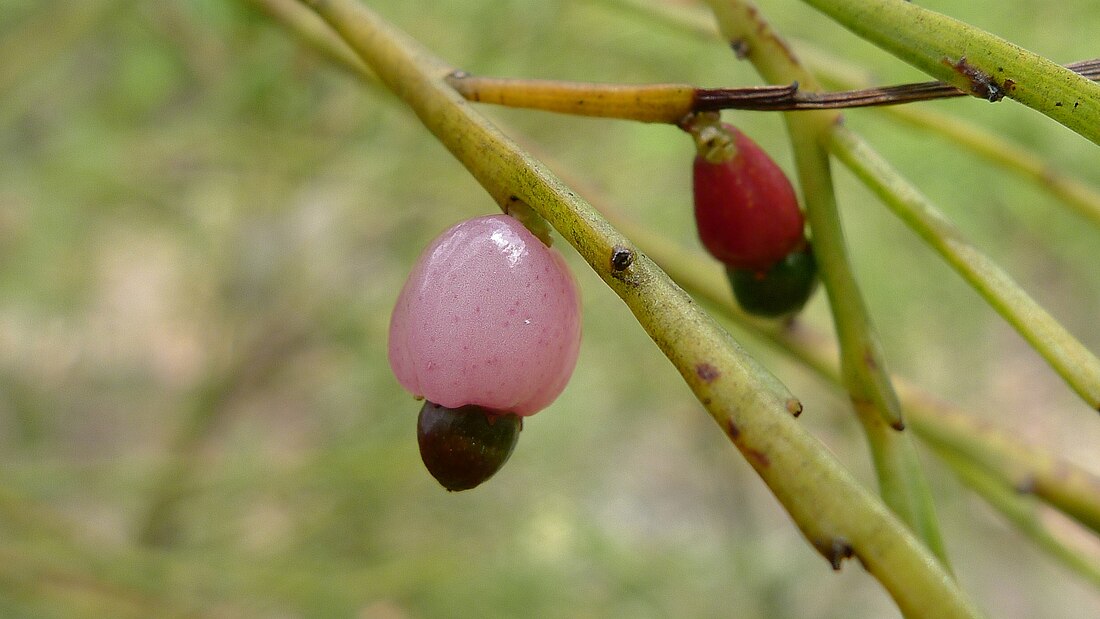Top Qs
Timeline
Chat
Perspective
Exocarpos strictus
Species of plant From Wikipedia, the free encyclopedia
Remove ads
Exocarpos strictus, with common names pale-fruit ballart, pale ballart, and dwarf cherry,[1][2] is an adaptably versatile erect shrub bearing cherry-like fruit, that forms dense thickets, that is native to parts of Australia (including Tasmania). E. strictus was described by botanist Robert Brown in 1810.
Remove ads
Branches and leaves
Though often hairy early on, E. strictus' branches typically become fine and vertical; occasionally they become either stout or long (rarely above 3.5 m) and bending downward with the weight of their foliage and/or fruit.[2]
Its leaves are 1 – 3 mm in length, caducous, linear, subulate, and vary in colour from light green to a bluish-green, and ashy to bronze[2]
Flowers
The flowers of E. strictus grow in little pedunculate or sessile clusters numbering 2–6. They have 4 or 5, triangular, tepals that measure about 0.5 mm long. The pedicel is 2–7 mm long, succulent, broadly obovoid, and coloured either mauve, red, or white.[2]
E. strictus flowers all year round.[3]
Fruit
The fruit of E. strictus superficially resemble stunted cherries. They are drupes measuring 2.5 – 4 mm, are ovoid or globose, shiny, and green to purple-black in colouration.[2]
Distribution and occurrence
E. strictus grows in great numbers in all but the very wettest and driest of habitats ranging from heathland to open forests to denser woodland.[3]
It is common in Victoria, South Australia, Queensland, New South Wales, Tasmania and the Australian Capital Territory[2]
References
External links
Wikiwand - on
Seamless Wikipedia browsing. On steroids.
Remove ads


